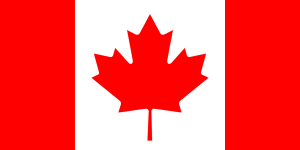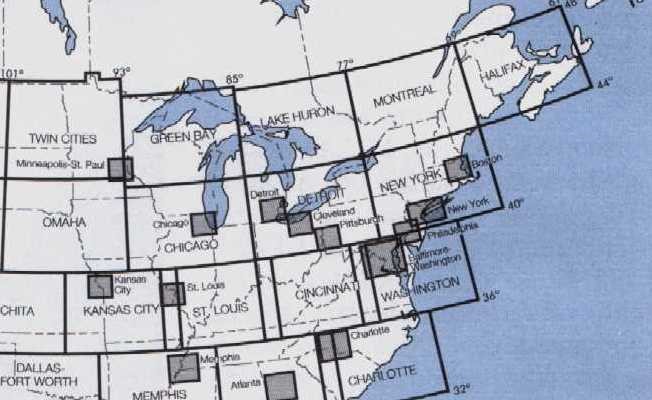
Let me start with a disclaimer that I am not the expert on international flying. My experience comes solely from having made several trips between Ohio and southern Ontario to visit friends and family. When I first checked into this, I received all kinds of totally irrelevant information, such as international flight plans, radio licenses, HF radios and wilderness survival gears. Even AOPA’s write-up did not help much.
This article is written in the hope that it might be of some use to pilots looking for first-hand information about flying to Canada. This is probably the easiest international flight any pilot could make. Canadian aviation is almost identical to ours, except for a few minor differences.

The first airport of landing in Canada must be a designated airport of entry, and you must arrive during their normal operating hours. Most Canadian airports near the U.S. border as well as larger ones further north are most likely to be designated airports of entry. Canada Customs operating hours varies from one airport to another. Smaller airports might only offer weekday service, but busier airports will have customs service at all hours including weekends. A complete listing can be found in the Canada Border Services Agency website. There is also a special program called CANPASS which allows pilots to land at additional airports outside normal operating hours, but that requires a special application and an annual fee, and is really only intended for frequent travelers.
Flight plans are mandatory and the aircraft must remain in contact with ATC with a discrete squawk code while crossing the border. Filing IFR is the best way to go. IFR flight plans are handled seamlessly across the two countries regardless of where you file. I am told that VFR flight plans are not handled the same way, and may require two separate flight plans to be filed with each country, with separate activation and termination as you cross the border.

Obtaining aeronautical charts is the most frustrating part. Canadian charts are not available on the internet due to copyright rules. I am not even aware of any paid service where you can download their charts. It is a major pain in the neck. If you are planning the flight the night before, as I often tend to do, you will be out of luck. But you can get away without buying Canadian charts if you are willing to take the unofficial route. All areas of Canada below the 49th parallel are covered by U.S. charts. That includes Toronto, Ottawa, Montreal, Quebec City, and the entire provinces of New Brunswick and Prince Edward Island. What a deal! The FAA has a disclaimer that the information outside the U.S. may be unreliable, but that is up to you. However, if you insist on buying Canadian charts, it is cheaper to get them mailed from a Canadian store. In addition, U.S. FBO’s near the border might also be a potential source for Canadian charts.
Before departing from your home airport, call Canada Customs on their toll-free number 1-888-CANPASS. You will be asked for an ETA, passenger names, citizenship and dates of birth. Once you depart, it works just like any other domestic flight. The Canadian and U.S systems are virtually transparent under IFR. You won’t even know which country’s airspace you are in. It was interesting that most of southwestern Ontario is under Cleveland Center’s airspace. You will be flying in Canadian airspace talking to a U.S. controller. Go figure. Handoffs were a nonevent. Cleveland hands you off to Toronto Center somewhere near London, Ontario. Toronto Center might hand you off to Montreal Center if you are going further east. There are some minor differences in the ATC language. They say “radar identified” instead of “radar contact”. They call “Terminal” instead of “Approach”. Canadian aircraft identifiers begin with a “C” followed by four letters and contain no numbers.
Upon landing, you call the same 1-888 number to report your arrival. It is best to do this from the aircraft with a cell phone. They will give you an arrival record number which you should keep in a safe place. I’ve been told that customs agents make random inspections and may show up to check your documents. However, of all the times I have landed in Canada, I have never seen a customs officer.
Canadian rules require VFR flight plans for all flights greater than 25 NM. The format is quite different from ours and it could be very confusing. The best thing to do is confess to FSS that you are not familiar with the format. They were more than happy to talk me through the flight plan. There are other differences. Tower will automatically open and close VFR flight plans. At non-towered airports, unless you tell the briefer otherwise, the flight plan will be activated at the proposed time. If you do not depart as planned, it is important to call FSS and amend or cancel the flight plan. They are very serious about search and rescue up there.
Airspace designations are somewhat different too. Class C airspace is treated like our class B. Class D looks much like our class C. They also have a class F. It can get pretty confusing. On the plus side, they don’t appear to be as rigid about the airspace rules as we are here. It was a more relaxed atmosphere. We filed IFR as much as possible, so this was not an issue for us. An interesting observation is that I was able to file using DUATS and still get my clearance from the local ATC.

If you are flying in the Toronto area, a visit to the City Center airport is highly recommended. It is a magnificent airport on an island just walking distance from downtown. It has a landing fee, but it is cheaper than parking a car in downtown. The view of the downtown area with its famous CN tower is breathtaking, and you can circle over the city without being pursued by fighter jets.
Coming back into the U.S is a much more serious affair. Similar rules apply, such as having to land at designated airports of entry during their business hours. There is no central toll-free number for U.S customs. You have to contact the individual customs office listed in the CBP website. There are two kinds of airports: international airport of entry, and customs landing rights airport. I am still unclear on the practical difference between these; they both seem to be the same. To avoid complications in case of a diversion, delay or emergency landing, it is important to clear customs as soon after entering U.S airspace as possible. We normally land at Sandusky, OH for two reasons: it was very close to the Canadian border, and it has an on-site customs office. We were told that on-site officers are more relaxed and less cranky than off-site officers who would have to drive to meet us. Upon landing, it is imperative that you stay in the airplane until the officer comes to meet you. There is a customs declaration form, and is best to have this form filled out ahead of time. The officer will ask for passports, aircraft registration, pilot certificate and medical. We found the officers at Sandusky to be friendly and courteous, but I have heard horror stories about other locations.
There is a $25 per calendar year fee for U.S customs services. You can pay this online, and you will receive a decal in the mail which should be attached to the aircraft door. If you don’t have time to wait for the decal to arrive in the mail, you can bring the printout of the online receipt as proof. In some cases, you can purchase the decal directly from the customs inspector, so it is best to check all of this ahead of time. If you are paying the inspector, it is best to have the application form filled out and have exact change before you arrive.
One last thing. NavCanada will send you a bill for ATC services. It is about $12, and is good for three months.
Leave a Reply